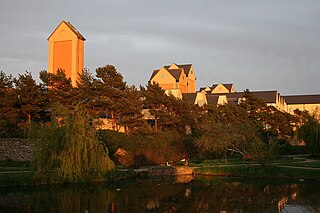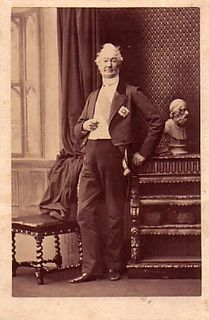| |||||
| Centuries: | |||||
|---|---|---|---|---|---|
| Decades: | |||||
| See also: | Other events of 1730 List of years in Ireland | ||||
Events from the year 1730 in Ireland.
| |||||
| Centuries: | |||||
|---|---|---|---|---|---|
| Decades: | |||||
| See also: | Other events of 1730 List of years in Ireland | ||||
Events from the year 1730 in Ireland.


The Custom House is a neoclassical 18th century building in Dublin, Ireland which houses the Department of Housing, Planning and Local Government. It is located on the north bank of the River Liffey, on Custom House Quay between Butt Bridge and Talbot Memorial Bridge.

Naas is the county town of County Kildare in Ireland. In 2016, it had a population of 21,393, making it the second largest town in County Kildare after Newbridge.
Events from the year 1935 in Ireland.
Sir Edward Lovett Pearce was an Irish architect, and the chief exponent of palladianism in Ireland. He is thought to have initially studied as an architect under his father's first cousin, Sir John Vanbrugh. He is best known for the Irish Houses of Parliament in Dublin, and his work on Castletown House. The architectural concepts he employed on both civic and private buildings were to change the face of architecture in Ireland. He could be described as the father of Irish Palladian architecture and Georgian Dublin.
Events from the year 1840 in Ireland.
Events from the year 1879 in Ireland.
Events from the year 1803 in Ireland.
Events from the year 1731 in Ireland.
Events from the year 1670 in Ireland.
Events from the year 1735 in Ireland.
Events from the year 1719 in Ireland.

St. Werburgh's Church is a Church of Ireland church building in Dublin, Ireland. The original church on this site was built in 1178, shortly after the arrival of the Anglo-Normans in the town. It was named after St. Werburgh, abbess of Ely and patron saint of Chester. The current building was constructed in 1719. It is located in Werburgh Street, close to Dublin Castle.

St. Mary's Abbey was a former Cistercian abbey located near Abbey Street in Dublin, Ireland. Its territory stretched from the district known as Oxmanstown down along the River Liffey until it met the sea. It also owned large estates in other parts of Ireland. It was one of several liberties that existed in Dublin since the arrival of the Anglo-Normans in the 12th century, which gave it jurisdiction over its lands.

The Dublin quays refers to the two roadways and quays that run along the north and south banks of the River Liffey in Dublin, Ireland. The stretches of the two continuous streets have several different names. However, all but three of the names share the same "Quay" designation. The quays have played an important part in Dublin's history.
The office of Surveyor General of Ireland was an appointed officer under the Dublin Castle administration of Ireland in the 17th and 18th centuries. The Surveyor General was typically responsible for the surveying, design and construction of civic works, and was often involved in overseeing the construction of military barracks and public buildings. Though Surveyors General were officially appointed by the Lord Lieutenant of Ireland, it was not unknown for the post to be "sold" by one holder to the next. For example, Arthur Jones-Nevill succeeded Arthur Dobbs in 1743, having paid £3,300 to secure the position. And despite being dismissed for maladministration, Nevill was allowed to sell the post on to Thomas Eyre in 1752. Eyre was the last holder of the office, which was abolished in 1763.
Edmond Albanach de Burgh, 1st Mac William Íochtar, born before 1315, died 1375.
Colonel Thomas de Burgh, always named in his lifetime as Thomas Burgh, was an Irish military engineer, architect, and Member of the Parliament of Ireland. He designed a number of the large public buildings of Dublin including the old Custom House (1704–6), Trinity College Library (1712–33), Dr Steevens' Hospital (1719), the Linen Hall (1722), and the Royal Barracks.

General Ulysses de Burgh, 2nd Baron Downes, was an Irish soldier and Tory politician. A General in the British Army, he served as Surveyor-General of the Ordnance under Lord Liverpool between 1820 and 1827. After succeeding a cousin as second Baron Downes in 1826, he sat in the House of Lords as an Irish Representative Peer from 1833 until his death.
Events from the year 1803 in Scotland.
turnpike Ireland 1730.